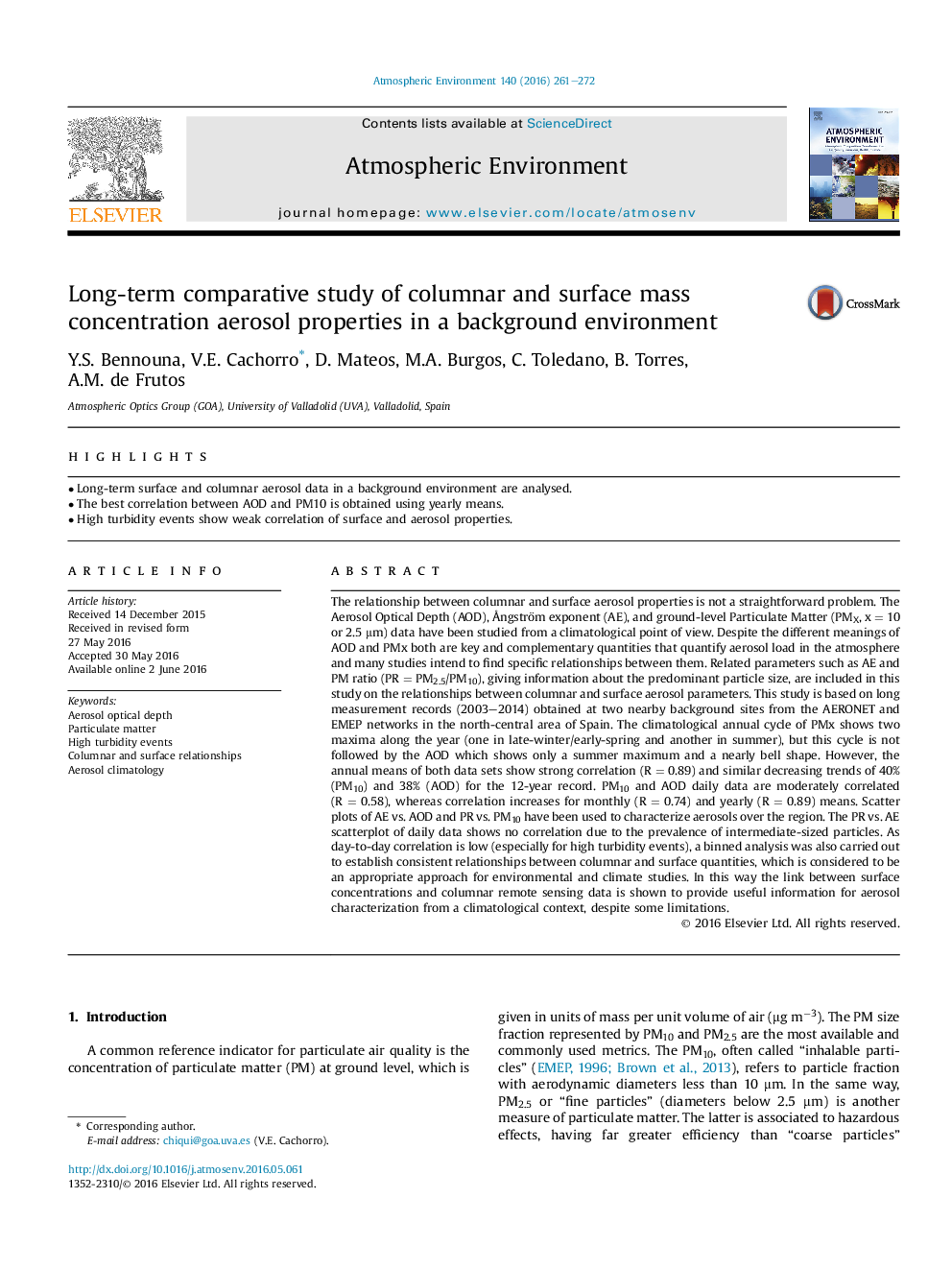| Article ID | Journal | Published Year | Pages | File Type |
|---|---|---|---|---|
| 6336184 | Atmospheric Environment | 2016 | 12 Pages |
â¢Long-term surface and columnar aerosol data in a background environment are analysed.â¢The best correlation between AOD and PM10 is obtained using yearly means.â¢High turbidity events show weak correlation of surface and aerosol properties.
The relationship between columnar and surface aerosol properties is not a straightforward problem. The Aerosol Optical Depth (AOD), à ngström exponent (AE), and ground-level Particulate Matter (PMX, x = 10 or 2.5 μm) data have been studied from a climatological point of view. Despite the different meanings of AOD and PMx both are key and complementary quantities that quantify aerosol load in the atmosphere and many studies intend to find specific relationships between them. Related parameters such as AE and PM ratio (PR = PM2.5/PM10), giving information about the predominant particle size, are included in this study on the relationships between columnar and surface aerosol parameters. This study is based on long measurement records (2003-2014) obtained at two nearby background sites from the AERONET and EMEP networks in the north-central area of Spain. The climatological annual cycle of PMx shows two maxima along the year (one in late-winter/early-spring and another in summer), but this cycle is not followed by the AOD which shows only a summer maximum and a nearly bell shape. However, the annual means of both data sets show strong correlation (R = 0.89) and similar decreasing trends of 40% (PM10) and 38% (AOD) for the 12-year record. PM10 and AOD daily data are moderately correlated (R = 0.58), whereas correlation increases for monthly (R = 0.74) and yearly (R = 0.89) means. Scatter plots of AE vs. AOD and PR vs. PM10 have been used to characterize aerosols over the region. The PR vs. AE scatterplot of daily data shows no correlation due to the prevalence of intermediate-sized particles. As day-to-day correlation is low (especially for high turbidity events), a binned analysis was also carried out to establish consistent relationships between columnar and surface quantities, which is considered to be an appropriate approach for environmental and climate studies. In this way the link between surface concentrations and columnar remote sensing data is shown to provide useful information for aerosol characterization from a climatological context, despite some limitations.
